Hello everyone! While I was browsing through in Twitter last week at lunch break, I found something interesting called Amplify Hashnode hackathon. Then I jumped straight away to the introduction article and guess what, I thought this is my chance to grab. When I was heading back to home that evening, I was thinking about an application that I would be able to build leveraging AWS Amplify tools and services. I already finished my plan on my way to home and planned to build a Project Management Application.
What i-Manage is?
i-Manage is a project management tool, where you can create projects, assign members to projects and monitor or update the progress of projects.
Sign-in
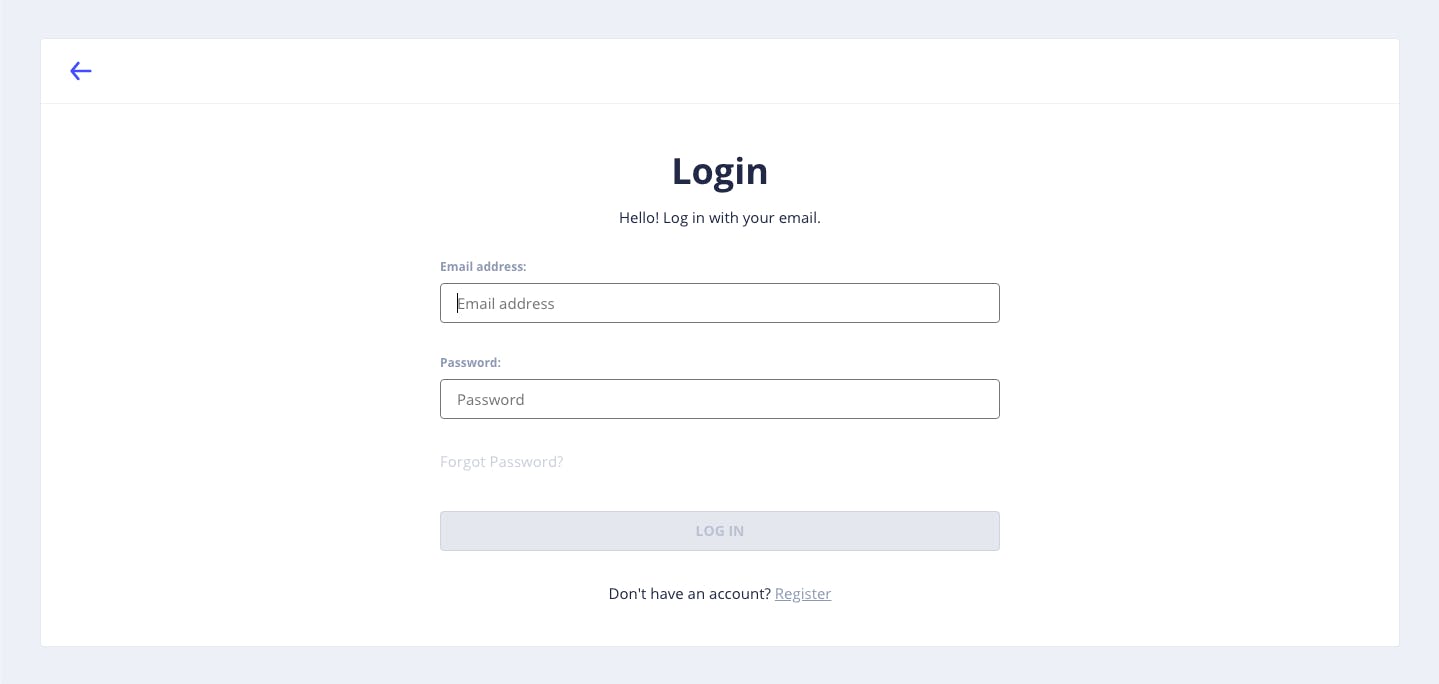
Register

Admin profile setup
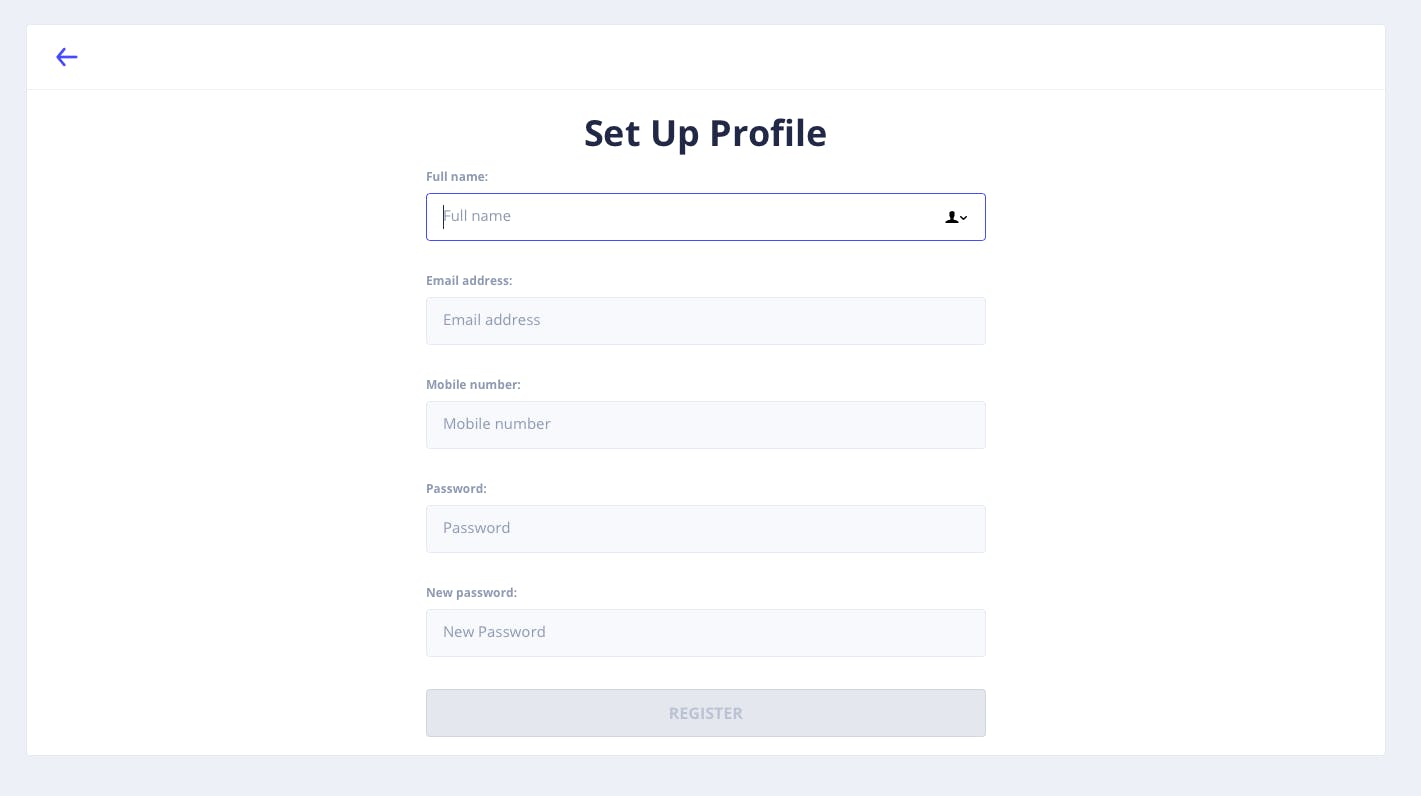
Create project - Only for Admins
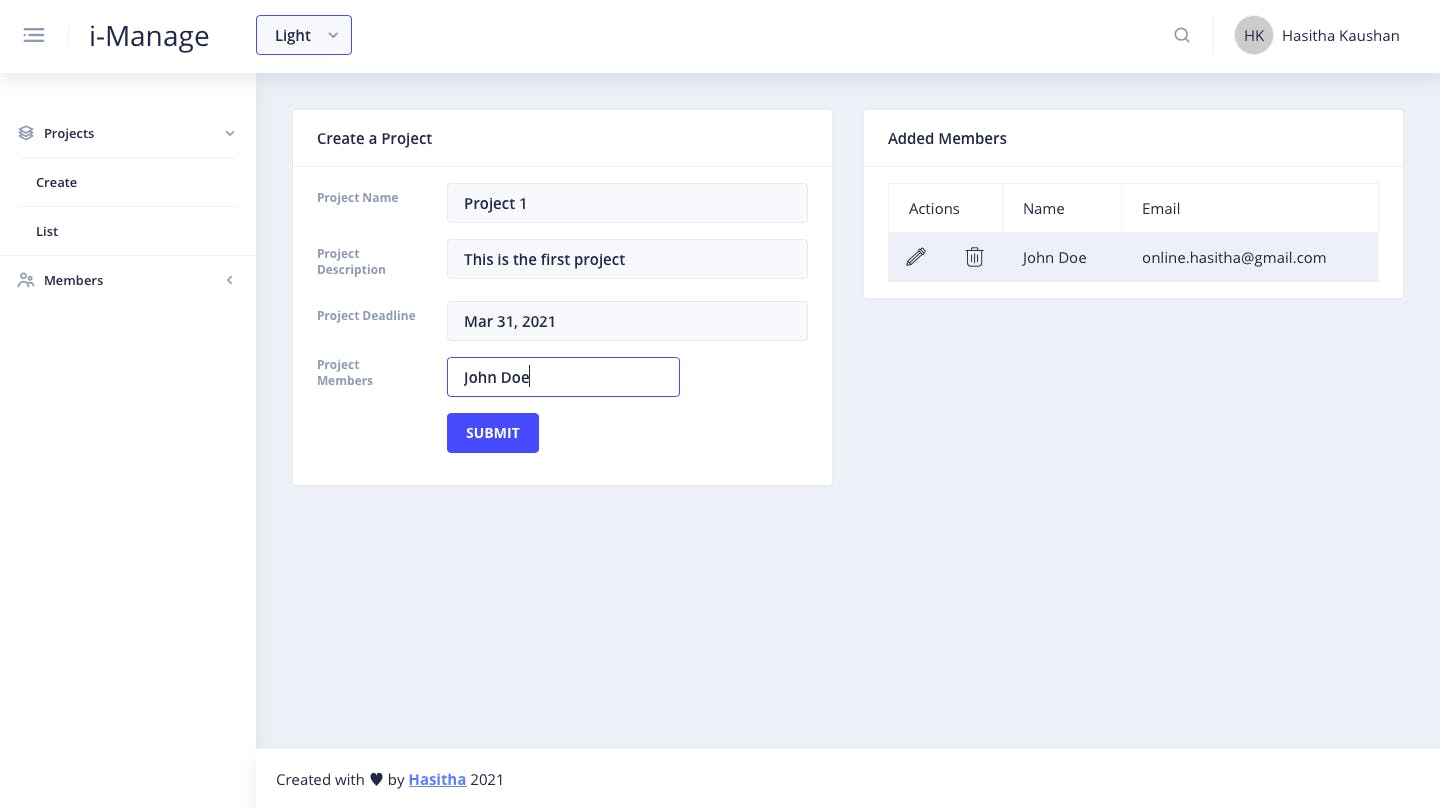
List projects - Only for Admins

Update projects - Only for Admins
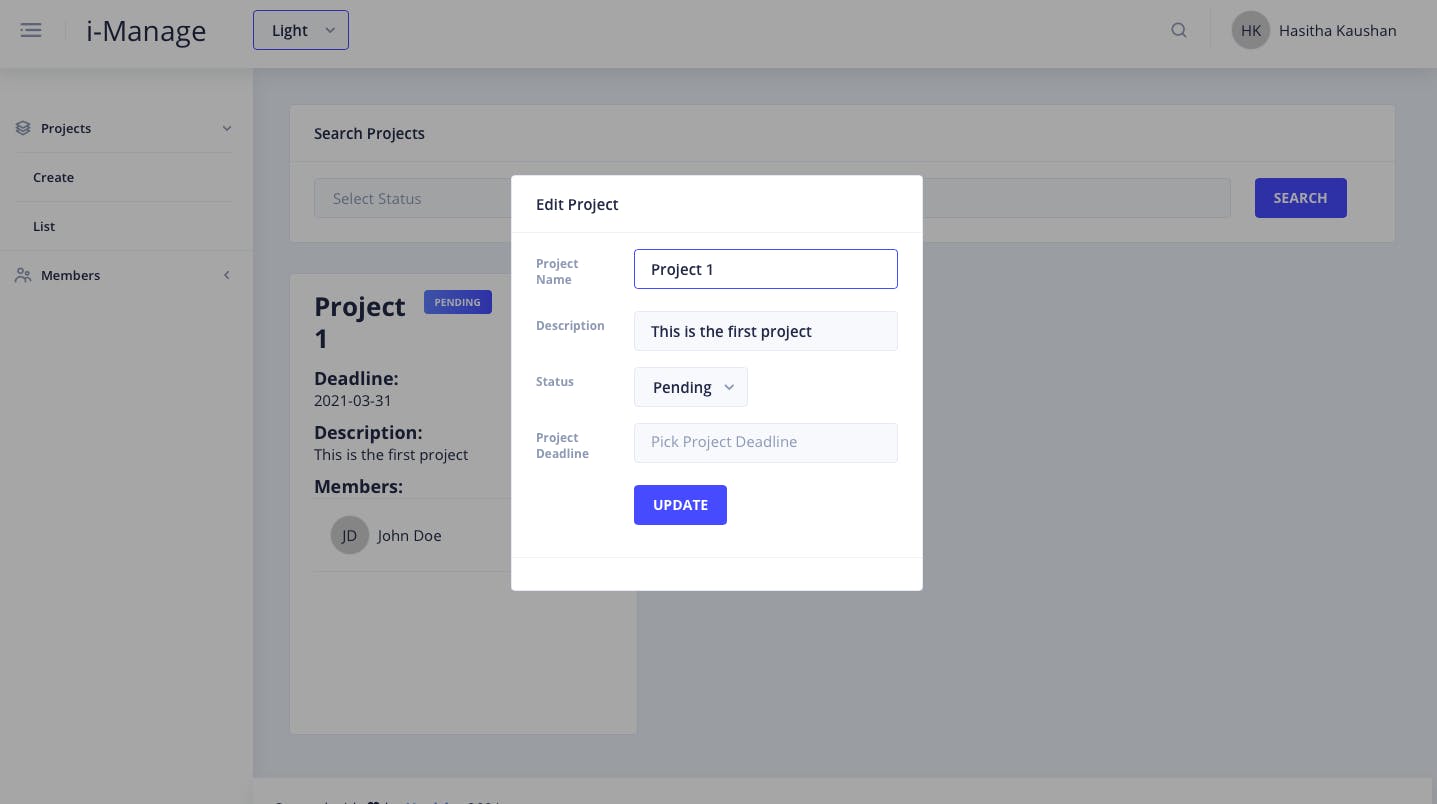
List employees - Only for Admins
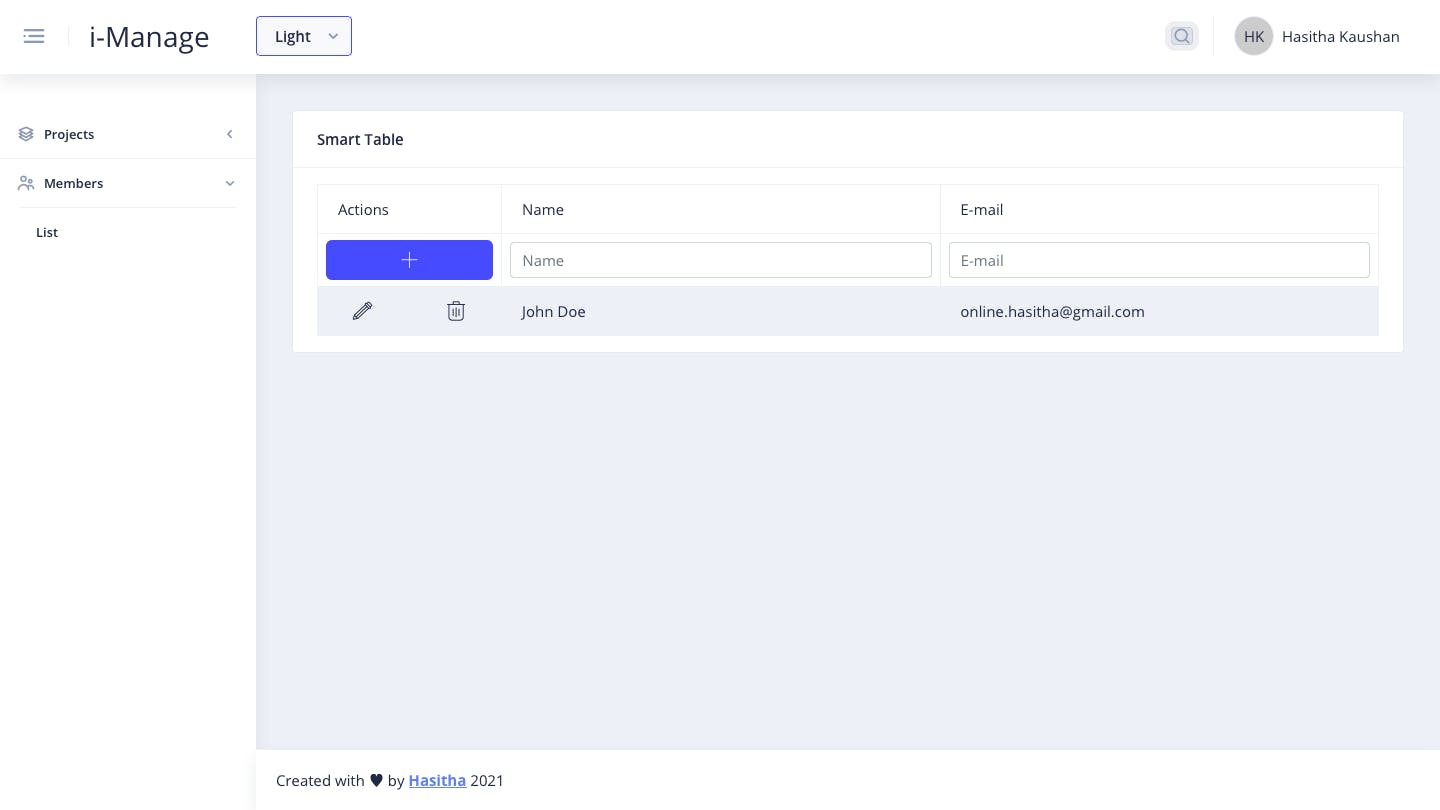
Member Dashboard
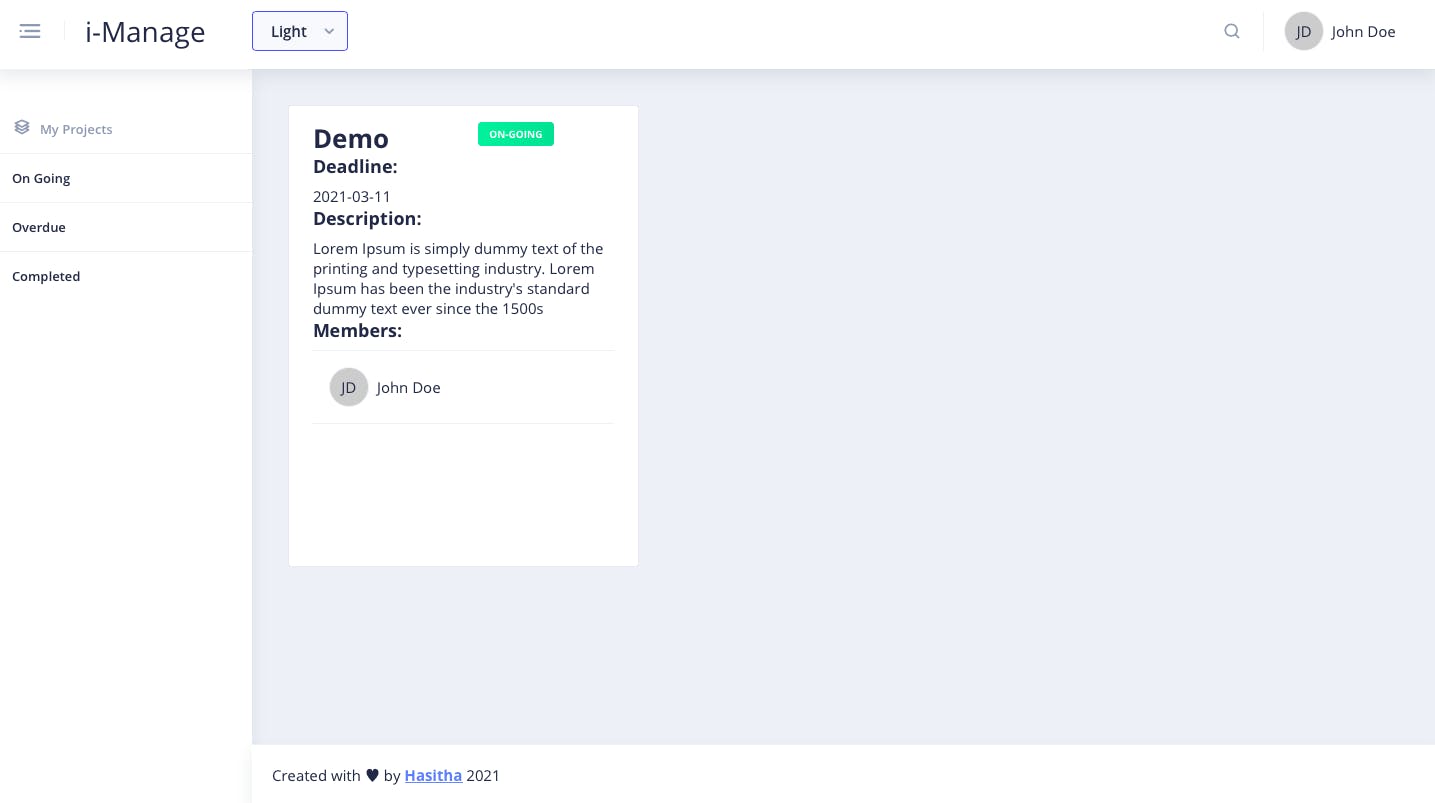
Architecture
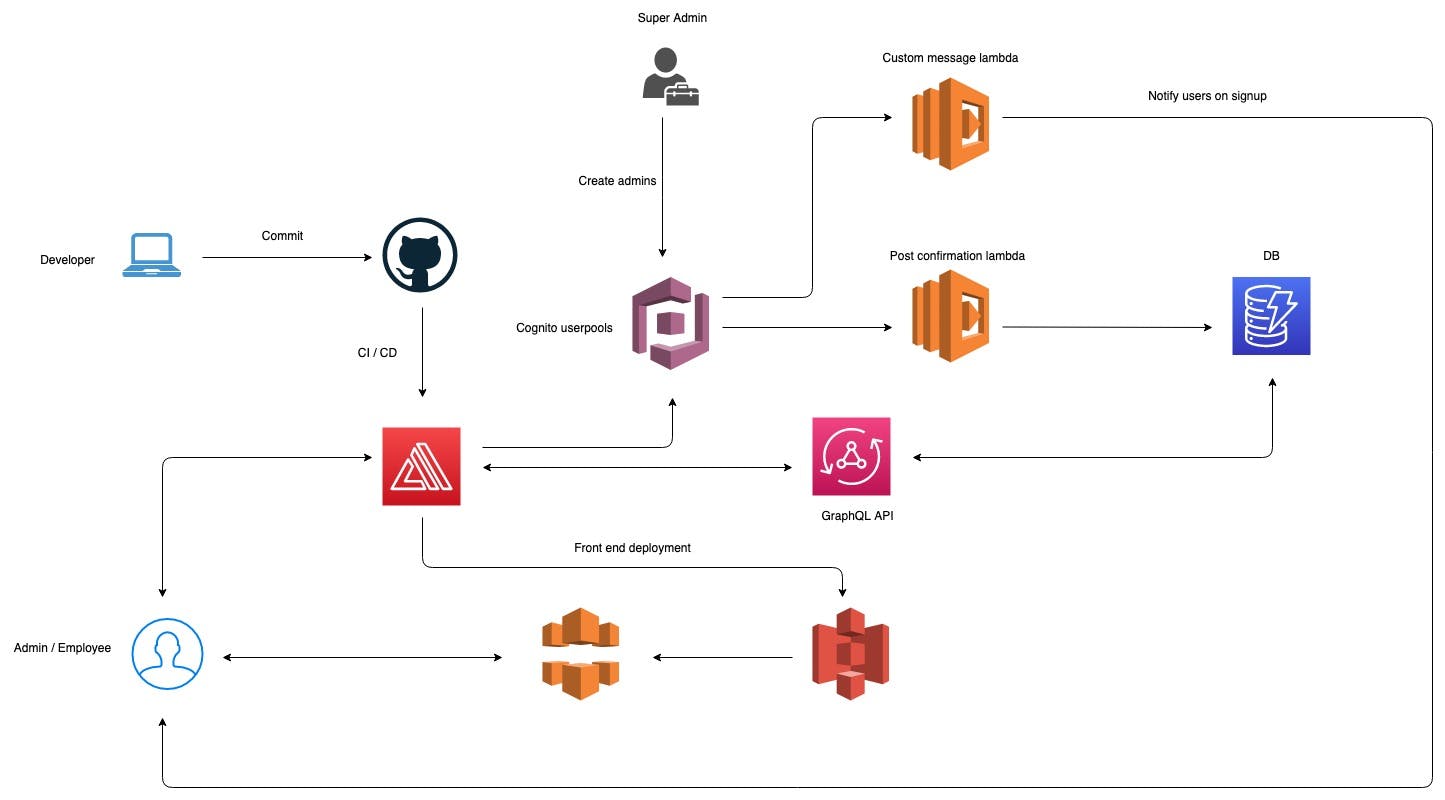
Tech stack
i-Manage is built on top of the following stacks.
- Angular 11
- Nebular UI
- AWS Amplify
- git
The following Amplify tools and services were used to build the application.
- Authetication - AWS Cognito
- Functoins - AWS Lambda
- API - GraphQL API using AppSync
- Hosting - to configure CI/CD
Of course Amplify CLI was used to configure all the AWS resources using Amplify.
Authentication
As it is shown in the architecture, there are 3 levels of users in i-Manage i.e.
- Super Admin: Has AWS console access and creates Admin users through Cognito console.
- Admin: Can create projects, assgin members to projects, view details of members and monitor / update projects.
- Employee: Can monitor projects.
Two static user groups are created in cognito namely, ADMINS and MEMBERS. Admins are added to the ADMINS groups while Employees are added to the MEMBERS group. Based on the user group, routes of the front-end application and data access through GraphQL are restricted.
API
A GraphQL API is created. There are three models.
- Project
- Employee
- EmployeeProject
GraphQL schema looks followiing.
type Employee @model
@auth(rules: [{ allow: groups, groups: ["ADMINS"], operations: [create, delete, update] }, { allow: owner, ownerField: "username", operations: [create, delete, update] }])
@key(name: "byType", fields: ["type"], queryField: "employeesByType")
@key(name: "byTypeByName", fields: ["type", "name"], queryField: "employeesByTypeByName")
@key(name: "byUsername", fields: ["username"], queryField: "employeesByUsername") {
id: ID!
username: String!
name: String!
email: String!
type: String!
employeeProjects: [EmployeeProject] @connection(keyName: "byEmployee", fields: ["id"])
}
type EmployeeProject @model
@key(name: "byEmployee", fields: ["employeeId"])
@key(name: "byProject", fields: ["projectId"]) {
id: ID!
employeeId: ID!
projectId: ID!
employee: Employee @connection(fields: ["employeeId"])
project: Project @connection(fields: ["projectId"])
}
type Project @model
@auth(rules: [{ allow: groups, groups: ["ADMINS"], operations: [create, delete, update] }])
@key(name: "byStatus", fields: ["status"], queryField: "projectsByStatus")
@key(name: "byStatusByName", fields: ["status", "name"], queryField: "projectsByStatusByName")
@key(name: "byStatusByDate", fields: ["status", "endingDate"], queryField: "projectsByStatusByDate") {
id: ID!
name: String!
description: String
status: String
endingDate: String
employeeProjects: [EmployeeProject] @connection(keyName: "byProject", fields: ["id"])
}
For Project model, static group authorization is used to restrict create, delete and update. For Employee model owner and static group authorization to restrict create, delete and update.
Data access patterns
- Get project by id
- Get projects by status
- Get projects by status by name
- Get projects by status by date
- Get projects by employee
- Get employees by type by name
- Get employees by project
- Get employees by type
- Get employee by id
Global Secondary Indexes are designed to match these data access pattern as shown in the above schema.
Functions
There are two Lambda functions are being used in the system as it is shown in the architecture. They are generated in auth configuration stage.
Custom message lambda trigger: Used to customize the user notification which is generated on user sign-up and add Employees to MEMBERS group.
exports.handler = (event, context, callback) => { // Define the URL that you want the user to be directed to after verification is complete if (event.triggerSource === 'CustomMessage_SignUp') { const { codeParameter } = event.request; const { region, userName } = event; const { clientId } = event.callerContext; const redirectUrl = `${process.env.REDIRECTURL}/?username=${userName}`; const resourcePrefix = process.env.RESOURCENAME.split('CustomMessage')[0]; const hyphenRegions = [ 'us-east-1', 'us-west-1', 'us-west-2', 'ap-southeast-1', 'ap-southeast-2', 'ap-northeast-1', 'eu-west-1', 'sa-east-1', ]; const seperator = hyphenRegions.includes(region) ? '-' : '.'; const payload = Buffer.from( JSON.stringify({ userName, redirectUrl, region, clientId, }) ).toString('base64'); const bucketUrl = `http://${resourcePrefix}verificationbucket-${process.env.ENV}.s3-website${seperator}${region}.amazonaws.com`; const url = `${bucketUrl}/?data=${payload}&code=${codeParameter}`; const message = `${process.env.EMAILMESSAGE}. \n ${url}`; event.response.smsMessage = message; event.response.emailSubject = process.env.EMAILSUBJECT; event.response.emailMessage = message; console.log('event.response', event.response); callback(null, event); } else if (event.triggerSource === 'CustomMessage_AdminCreateUser') { const url = process.env.ADMINURL; event.response.smsMessage = "Welcome to the service. Your user name is " + event.request.usernameParameter + " Your temporary password is " + event.request.codeParameter; event.response.emailSubject = process.env.EMAILSUBJECT; event.response.emailMessage = "Welcome to the service. Your user name is " + event.request.usernameParameter + " Your temporary password is " + event.request.codeParameter + ". Follow this link to complete your sign up. " + url; callback(null, event); } else { callback(null, event); } };- Post confirmation lambda trigger: Used to add users to Employee DynamoDB table.
const aws = require('aws-sdk');
var ddb = new aws.DynamoDB()
exports.handler = async (event, context, callback) => {
console.log(event);
if (event.triggerSOurce == 'PostConfirmation_ConfirmSignUp') {
const cognitoidentityserviceprovider = new aws.CognitoIdentityServiceProvider({ apiVersion: '2016-04-18' });
const groupParams = {
GroupName: process.env.GROUP,
UserPoolId: event.userPoolId,
};
const addUserParams = {
GroupName: process.env.GROUP,
UserPoolId: event.userPoolId,
Username: event.userName,
};
try {
await cognitoidentityserviceprovider.getGroup(groupParams).promise();
} catch (e) {
await cognitoidentityserviceprovider.createGroup(groupParams).promise();
}
let date = new Date()
let params = {
Item: {
'id': {S: event.request.userAttributes.sub},
'__typename': {S: 'Employee'},
'username': {S: event.userName},
'name': {S: event.request.userAttributes.name},
'type': {S: 'MEMBER'},
'email': {S: event.request.userAttributes.email},
'createdAt': {S: date.toISOString()},
'updatedAt': {S: date.toISOString()},
},
TableName: process.env.EMPLOYEETABLE
}
try {
await ddb.putItem(params).promise()
console.log("Success")
} catch (err) {
console.log("Error", err)
}
try {
await cognitoidentityserviceprovider.adminAddUserToGroup(addUserParams).promise();
callback(null, event);
} catch (e) {
callback(e);
}
}
};
Hosting
I have connected develop github branch to the dev backend environment using Amplify to enable CI/CD to automatically deploy the application.
Key findings
When I was planning this application, I supposed creating dynamic user group authorization for GraphQL API. In this case, Admin has to create user groups for each project. Unfortunately, I was unable to find admin quaries in Amplify Auth to create user groups. Thus, it was not possible to perform dynamic user group authorization in GraphQL API.
Project details
Live project - https://develop.d394kogwnc7hvv.amplifyapp.com
Admin's credentials
- username: hkraclh@gmail.com
- password: Admin123
Employee's credentials
- username: online.hasitha@gmail.com
- password: John1234
Of course you can create your own Employee account by signing up in the app. Then check your email to confirm your account. Afterwards you can assign your newly created account to projects by signing in as the admin.
Github repo - https://github.com/chris7716/amplify-pm-app
Conclusion
It's been fun creating this project and was able to apply lot of self-learnt Amplify tools and services to apply in this project. Thank you Amplify and Hashnode for providing this opportunity and specially I have to thank Nader Dabit, who inspired me from his videos and tutorials to learn Amplify.
Happy Coding! Cheers!

